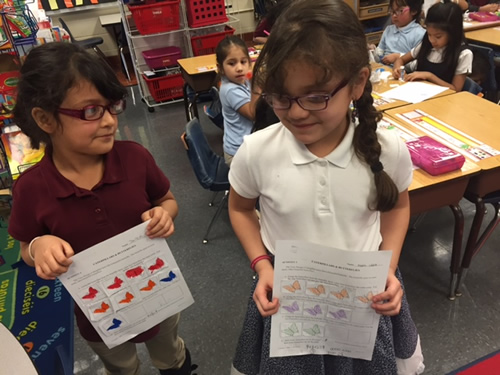Districts around the country are moving away from teaching models based on lectures and textbooks—but transition isn’t always simple. Creating a competency-based or mastery-based environment requires re-thinking everything, including teaching methods, assessments, and how to best prepare students for life after school. Both Kankakee Public Schools in Illinois and Naugatuck Public Schools in Connecticut are making the shift to competency-based learning, and have had their share of challenges along the way. Here, administrators from the two districts chart their journey and reflect on the importance that project-based learning (PBL) has in preparing students for college and careers.
Caroline Messenger, director of curriculum at Naugatuck Public Schools
As the director of curriculum, I help students answer the age-old question, “Why do I need to know this?” A few years ago, this question inspired me to begin exploring a route for K–4 and 5th- and 6th-grade students that would allow us to stray from the traditional model of lecture and testing. Rather than focusing on traditional curricula, we transitioned to a mastery-based learning model. Competency Works defines this type of learning model as “designed to ensure students are becoming proficient by advancing on demonstrated mastery.” Districtwide, we now focus our teaching and learning on the competencies we expect our students to achieve.
As part of this transition, we are making PBL a larger part of our curricula through more student-driven learning experiences. Teaching real-world skills in authentic situations has become the root of what makes a lasting impact on student learning. By allowing our teachers to take a step back, we put the students in charge of their own learning so they can discover for themselves the reason why certain knowledge and skills are relevant to them.
We knew that building a mastery-based curriculum from scratch would be a long process, so we use supplementary tools and programs like Defined STEM that support our curriculum, to provide teachers and students with the resources they need to show what they know and complement the learning experiences and tasks in the curricula. When we move the spotlight to shine on student growth and how PBL encourages examining that growth, teachers can offer more timely feedback, deliver more targeted instruction, and assist students as they explore concepts and ideas.
After nearly three years of working toward this model, we have created report cards for K–4 students with zero letter or number grades. Instead, we use progress bars to show individual students’ growth toward grade-level appropriate goals, indicating where the student started and how much they have achieved throughout the year. With our new report card, we can look at where students are and better understand the pace at which they learn. This, to us, has more of an impact than taking off points on a test.
Felice Hybert, assistant superintendent for curriculum and instruction, Kankakee School District
Having a job may seem a lifetime away for a child, but by exposing them to different career paths, we can get them thinking about their life after high school and better prepare them for their lives after graduation.
Three years ago, we transformed Kankakee’s general education track into the College and Career Academy, which is 100-percent focused on using PBL to prepare students for future jobs. We’ve introduced 16 different career paths to about 70 percent of our K–5 students using Defined STEM’s career wheel. Each grade has a designated career cluster they focus on, and as students move through the grades they explore a wide variety of career opportunities.
In addition, we are one of 10 high school districts in Illinois that has started to move to competency-based learning. We’re working to report on students’ mastery of skills with progress levels, rather than a traditional report card at the end of each semester. We started by marrying the traditional, content-driven course work with performance-based assessment. Rather than having teachers manage a whole group of 30+ students at once, PBL frees them to break classes into small groups and connect deeply with each group.
As we make our way toward a completely mastery-based model, we are slowly ridding ourselves of traditional grade levels. Instead, we aim to categorize students by year one, year two, and so on. If a child can demonstrate mastery of a certain content area, they can move on in their work—even if they are technically a freshman. We have also increased dual-enrollment options, providing our junior and senior students opportunities to take local community college classes, which has played a significant role in giving our students a taste of real-world jobs once they have displayed mastery.
For example, we have a partnership with a local health clinic in the district where students interested in medical studies can learn necessary skills for a career in that field. We’ve also had local conferences where students interested in areas like public relations and public speaking interview with workforce-readiness programs and learn from employees about what it takes to succeed in a full-time job.
Since we implemented our PBL and competency-based model, data shows that in one year (2016 to 2017), reading comprehension scores increased 8 percent and math application increased 9 percent. We have also seen an increase in student engagement in all of our K–6 classes, and have continued to build partnerships with local businesses and industries that support students’ exploration and curiosity about future career options.
- 4 ways to encourage play in education - April 25, 2024
- It’s time to pay student teachers - April 25, 2024
- The evolving requirements of a K-12 school network - April 24, 2024

